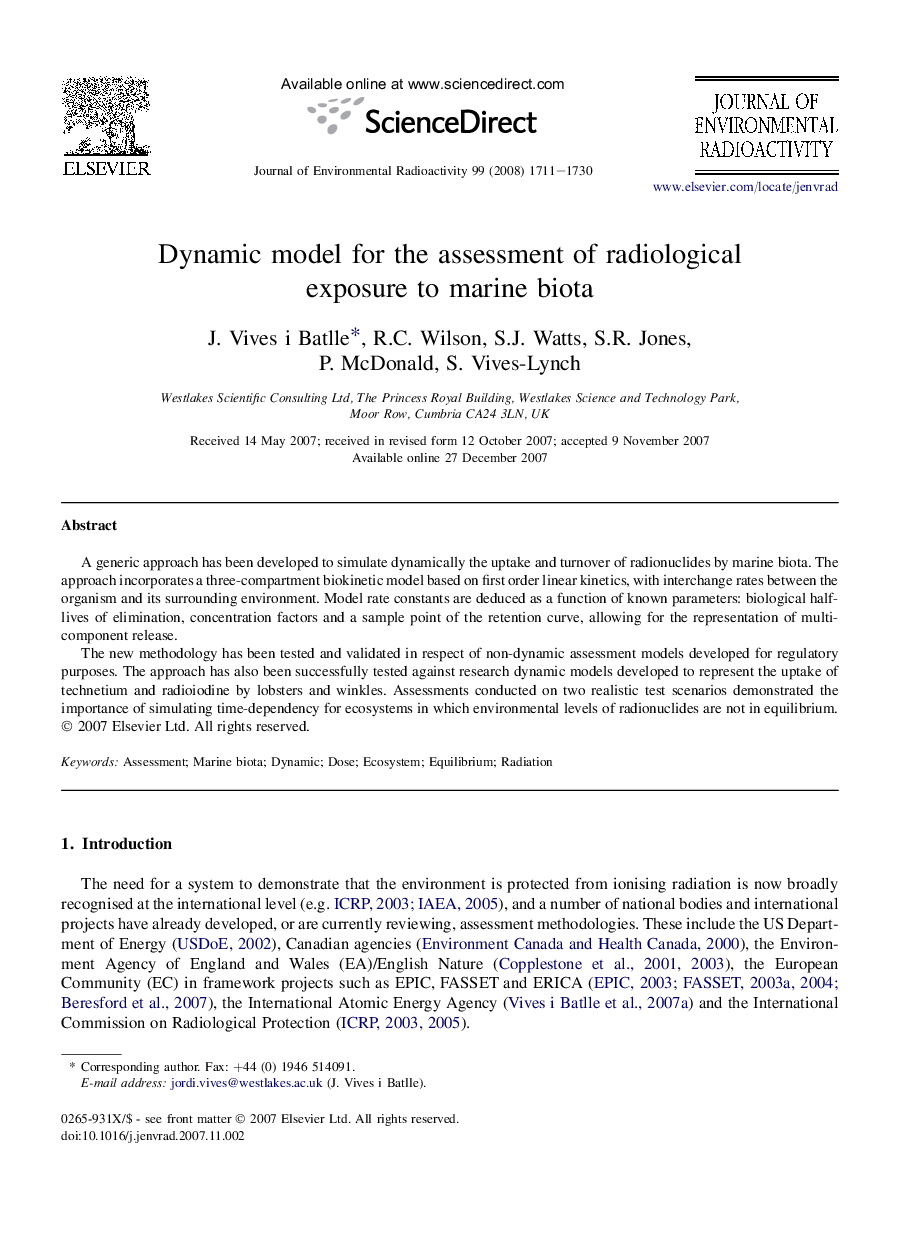| Article ID | Journal | Published Year | Pages | File Type |
|---|---|---|---|---|
| 1739118 | Journal of Environmental Radioactivity | 2008 | 20 Pages |
A generic approach has been developed to simulate dynamically the uptake and turnover of radionuclides by marine biota. The approach incorporates a three-compartment biokinetic model based on first order linear kinetics, with interchange rates between the organism and its surrounding environment. Model rate constants are deduced as a function of known parameters: biological half-lives of elimination, concentration factors and a sample point of the retention curve, allowing for the representation of multi-component release.The new methodology has been tested and validated in respect of non-dynamic assessment models developed for regulatory purposes. The approach has also been successfully tested against research dynamic models developed to represent the uptake of technetium and radioiodine by lobsters and winkles. Assessments conducted on two realistic test scenarios demonstrated the importance of simulating time-dependency for ecosystems in which environmental levels of radionuclides are not in equilibrium.
